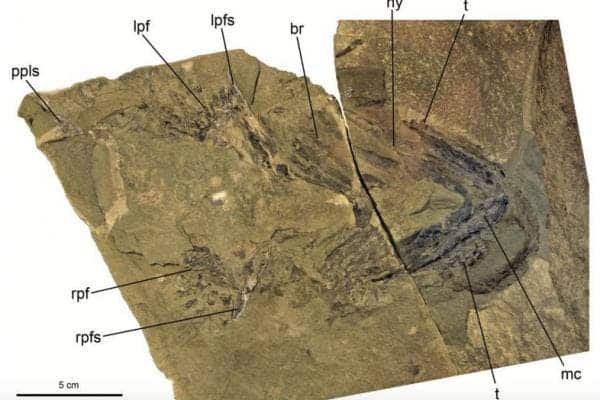New paleontological evidence based on X-ray tomography indicates that sharks emerged from a group of bony fishes called acanthodians. Researchers came to this conclusion after analyzing an extraordinarily well-preserved fossil which has features of both groups — sharks and acanthodians — in other words, it’s pretty much a “missing link”.
Sharks have evolved earlier than trees — seriously. They’ve been around for more than 400 million years, a true pinnacle of evolution, changing surprisingly little in the process. But unlike dinosaurs or other emblematic creatures, shark fossils are relatively few in numbers.
“Major vertebrate evolutionary transitions, such as ‘fin to limb’ and ‘dinosaur to bird’ are substantiated by numerous fossil discoveries,” said John Maisey, the lead author of the study and the Herbert R. and Evelyn Axelrod Research Curator in the American Museum of Natural History’s Division of Paleontology. “By contrast, the much earlier rise of sharklike fishes within jawed vertebrates is poorly documented. Although this ‘fish to fish’ transition involved less profound anatomical reorganization than the evolutions of tetrapods or birds, it is no less important for informing the evolutionary origins of modern vertebrate diversity.”
The question of shark evolution was turned on its head in 2003, when a surprising fossil was found in New Brunswick, Canada. The fossil was basically a skeleton of a sharklike fish that scientists have named Doliodus problematicus — because it caused a lot of problems. Living some 400 million years ago, D. problematicus had a lot of things in common with the acanthodians, as well as with the sharks and we didn’t really know where to place it in the tree of life.
Things got even more complicated when Maisey and colleagues analyzed the head and teeth in 2009, finding that they look a lot like those of sharks. The fossil was basically placed in a limbo, with more and more evidence indicating that it was just a shark, and not an acanthodian. But this new, CT study clearly shows that the fossil has significant fish traits.
Specifically, the CT scan revealed a number of spines buried inside the fossil skeleton. The spines likely lined the underside of the fish and are a clear characteristic of acanthodians — which means that the fossil has clear traits of both fish and sharks, a clear indication of a transition phase between the two groups.
“The arrangement of these spines shows unequivocally that this fish was basically an acanthodian with a shark’s head, pectoral skeleton, and teeth,” Maisey said.
Journal Reference: Maisey, John G.; Miller, Randall F. (Randall Francis), 1956-; Pradel, Alan.; Denton, John S. S.; Bronson, Allison.; Janvier, Philippe — Pectoral morphology in Doliodus : bridging the ‘acanthodian’-chondrichthyan divide.










